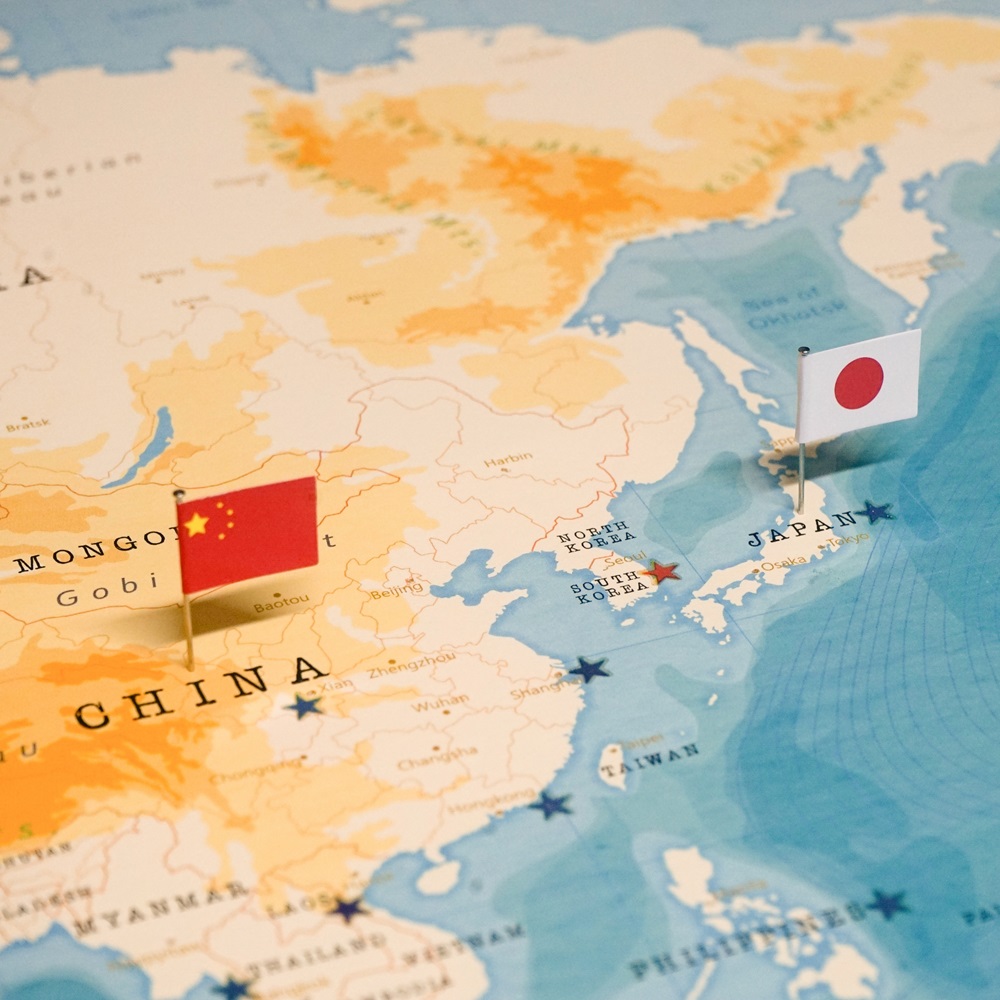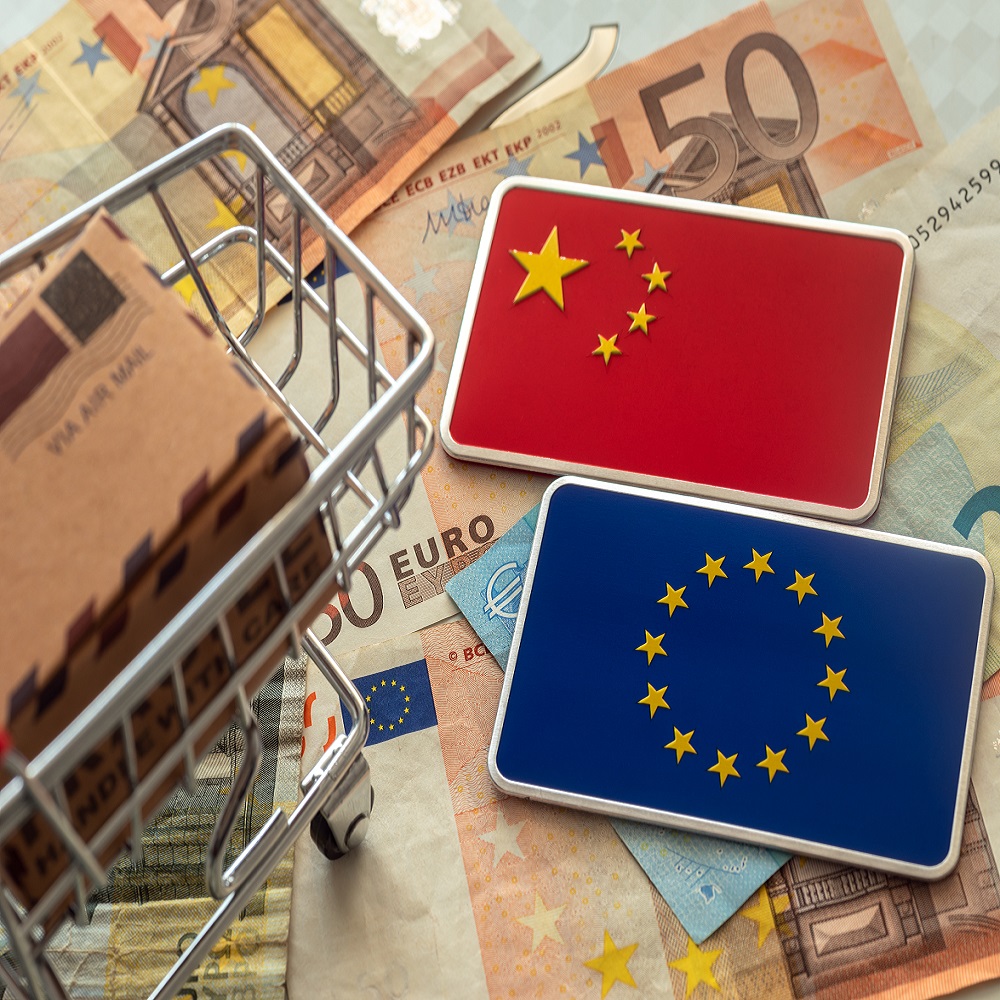
Beijing's reach for the Sea of Japan
by Johann C. Fuhrmann
한국어로 읽기Leer en españolIn Deutsch lesen Gap اقرأ بالعربيةLire en françaisЧитать на русском China's geopolitics and Russia's concessions While the Western media continues to speculate about China's role in the Russian war of aggression, Beijing is seeking to maximize its benefits: from China's point of view, the aim is to exploit Moscow's dependence on the People's Republic and expand cooperation in its own interests - and not just in economic terms. In geopolitical terms, this relates in particular to China's access to the Sea of Japan, but Beijing's plans extend as far as the Arctic. A paragraph from a joint statement by Presidents Xi and Putin, which at first glance seems inconspicuous, could have far-reaching geopolitical implications and become a serious security policy challenge for Japan and South Korea. New balance of power opens up room for maneuver for Beijing The North American Aerospace Defense Command (NORAD) experienced a premiere of a special kind on July 24: for the first time, fighter jets from the USA and Canada had to take off over the Bering Sea as two Chinese H-6K bombers approached the coast of Alaska. These were accompanied by two Russian Tupolev Tu-95MSs.[i] Just a few days earlier, Russia and China had held a joint naval and air force exercise called "Joint Sea-2024" near the southern Chinese province of Guangdong. But while these joint military exercises attracted media attention, Beijing and Moscow are creating facts in the background that could have far-reaching consequences for the security architecture in the Sea of Japan and around the Korean peninsula: Russia's ruler Vladimir Putin and China's President Xi Jinping recently published a joint declaration on deepening their strategic partnership.[ii] The background to the paper was the establishment of diplomatic relations between the two countries, or the Soviet Union and the People's Republic of China, 75 years ago. It contains the following resolution: "Russia and China wish to conduct a constructive dialog with the Democratic People's Republic of Korea on the navigation of Chinese ships across the lower reaches of the Tumen River." What seems inconspicuous could, from Seoul and Tokyo's perspective, change the strategic balance of power vis-à-vis China to their own disadvantage and have a decisive impact on the sensitive security architecture in the region. The Tumen River: will China's maritime impasse disappear? The 521-kilometre-long Tumen River forms the border between China and North Korea and becomes the border river between North Korea and Russia downstream before flowing into the Sea of Japan. At present, Chinese ships can only navigate the river freely as far as the village of Fangchuan at the eastern end of the inland province of Jilin. Permission from both Russia and North Korea is required for the remaining 15 kilometers to the Sea of Japan. A Soviet-era "Friendship Bridge" less than ten meters high also blocks the passage of larger ships. Historically, China held the area until the Russian Empire gained control in the 1860s. China has repeatedly called on Russia and North Korea to permanently allow Chinese ships to navigate the river to the Sea of Japan and has proposed the creation of a special economic zone along its banks. China's goal is clear: Beijing is keen to gain access to the Sea of Japan via the Tumen River. Japan and South Korea: concerns about geopolitical implications There is concern in Japan that the strategic balance of power vis-à-vis China could shift to Japan's disadvantage: In an interview with the daily newspaper Nikkei Asia, Chisako Masuo, professor of Chinese foreign policy at Kyushu University, warns that in the future, Chinese coast guard patrol vessels could enter the Sea of Japan via the Tumen River alongside larger ships. "This could force the Japanese navy to withdraw its coast guard vessels from the Senkaku Islands, which would weaken surveillance in the East China Sea."[iii] Japan and China are in dispute over the Senkaku Islands. Japan controls them, China calls them Diaoyu and claims them for itself. Recently, the presence of Chinese ships in the waters around the islands has increased again. "There are likely to be similar concerns in South Korea. Chinese ships could now reach the Korean peninsula from both sides. In addition, both Japan and South Korea are close allies of the USA. A deterioration in the security situation - even if it is only perceived - would therefore also have an impact on the plans of the US armed forces," analyses journalist Michael Radunski, who reported from Beijing as a correspondent for several years[iv]. The Sea of Japan: Gateway to the Arctic Beijing is pursuing a much broader goal beyond access to the Sea of Japan: access to the Arctic. In a paper published on May 13, 2024, researchers from northern China's Dalian Maritime University argue that access to the Sea of Japan could strengthen China's position in the Arctic and significantly advance Beijing's vision of a "Polar Silk Road."[v] If the Arctic is indeed largely ice-free by mid-century, new and shortened sea routes would open up for Chinese shipping. "With the Polar Silk Road, China is also embedding the Arctic region in the so-called New Silk Road (Belt and Road Initiative), a large-scale Chinese project to expand an intercontinental infrastructure and trade network. The potential shipping routes of the "Polar Silk Road" run west of Greenland along the Canadian coast (Northwest Passage), from Scandinavia along the Siberian coast of Russia (Northeast Passage) and centrally between Spitsbergen and Greenland (Transpolar Route) into the Bering Strait," states David Merkle, China expert at the Konrad Adenauer Foundation, in a comprehensive analysis of Chinese policy in the northern polar region. [vi] Currently, a significant proportion of Chinese trade has to pass through the narrow Strait of Malacca between Indonesia and Malaysia. A blockade of this strait, which is only around 50 kilometers wide at its narrowest point, would pose a serious threat to China's energy security. In addition, an ice-free Arctic would shorten the existing sea routes from Asia to Europe by around 8,000 kilometers and to North America by around 4,500 kilometers. Overcomeable challenges or deliberate uncertainty? Russia and North Korea have so far been extremely sceptical of China's plans. Moscow fears that China's influence in North-East Asia could increase. Meanwhile, North Korea also has a lot at stake: until now, all Chinese goods have crossed the Tumen River via a bridge and been transported overland to the port of Rajin. "Therefore, the idea of allowing China to ship directly to the Pacific via the Tumen River would make this port redundant. North Korea would lose a lot of revenue as a result," states Melik Kaylan from the business magazine Forbes.[vii] He points out that massive dredging and widening would be required to make the Tumen navigable for large ships. In his view, the idea of restoring Chinese access seems like a fantasy, "an improbable one". So why did Putin and Xi bring up this idea? His explanation: "The coastal strip was ceded to Russia by the Qing dynasty in the 19th century and the People's Republic of China has been demanding it back for decades. Putin is running out of incentives he can offer Beijing to support his war in Ukraine. Such an offer goes down well with the Chinese public - but triggers anger in Moscow among supporters of the Putin regime, who are filled with Great Russian fanaticism. (...) But Putin is making a certain point: if Beijing gains direct access to the Sea of Japan, the strategic equation will change radically. Currently, the Chinese navy has to sail around the entire Korean peninsula to get to this area. Suddenly, Beijing could directly threaten Japan (and various disputed islands)."[viii] Consequently, the burden on the US and its allies to expand maritime projection, protection, readiness and resources would increase dramatically. So is it all just a PR stunt designed to create uncertainty among the US and its allies - and also generate applause among the Chinese public? This theory is contradicted by the fact that there are hardly any reports in the state media of the People's Republic that address the issue. Furthermore, there is increasing movement in the matter: Chinese online portals have reported that Putin agreed further resolutions at his meeting with North Korean ruler Kim Jong Un in mid-June. Accordingly, North Korea and Russia are said to have already signed a bilateral agreement on the construction of a new bridge over the Tumen River. "It can be seen that cooperation between Russia and China is becoming ever closer in light of the ongoing Russia-Ukraine conflict and increasing Western sanctions. The redesign of this bridge is not only an infrastructure project, but also a symbol of strategic cooperation between the two countries [Russia and China] and heralds a new era of economic cooperation," judges Yi Dan Qing Cheng, who writes under a pseudonym and is one of the few commentators from China to have dealt with the issue in a journalistic capacity.[ix] Outlook There is no question that the Russian war of aggression against Ukraine has changed the balance of power and relations between Beijing, Moscow and Pyongyang. Russian President Vladimir Putin and North Korean leader Kim Jong Un signed a comprehensive strategic partnership agreement in Pyongyang in June. Putin traveled to North Korea for the first time in a quarter of a century to personally deepen relations between the two states. Meanwhile, Russia is dependent on Chinese goods: in 2023, goods worth a record value of more than 240 billion US dollars were traded between Russia and China, an increase of 26.3 percent compared to the previous year. These shifts in Russia's power and dependencies open up new opportunities for the People's Republic, including geopolitically. If the project to provide Chinese access to the Sea of Japan is successfully pursued, China could develop the Tumen Delta as a secondary shipyard for its naval and patrol vessels and position them strategically close to Japan's international maritime borders. The region appears to be preparing for growing tensions: The foreign ministers of Australia, India, Japan and the USA announced in Tokyo at the end of July that they would be expanding their cooperation within the framework of the so-called Quad. Specifically, this involves the area of cyber security - but also maritime security in the Indo-Pacific. References [i] Siehe ausführlicher: Zwerger, Patrick 2024: Uralt-Bomber aus Russland und China treffen auf US-Jets, abrufbar unter: https://www.flugrevue.de/militaer/tupolew-tu-95ms-und-harbin-h-6-uralt-bomber-aus-russland-und-china-vor-alaskas-kueste/, letzter Zugriff: 30.7.2024. [ii] Außenministerium der Volksrepublik China 2024: Gemeinsame Erklärung der Volksrepublik China und der Russischen Föderation zur Vertiefung der umfassenden strategischen Kooperationspartnerschaft im neuen Zeitalter anlässlich des 75. Jahrestages der Aufnahme diplomatischer Beziehungen zwischen den beiden Ländern, abrufbar unter: https://www.fmprc.gov.cn/zyxw/202405/t20240516_11305860.shtml, letzter Zugriff: 30.7.2024. [iii] Tajima, Yukio 2024: China eyes Sea of Japan access via Russia-North Korea border river, Nikkei Asia, abrufbar unter: https://asia.nikkei.com/Politics/International-relations/China-eyes-Sea-of-Japan-access-via-Russia-North-Korea-border-river, letzter Zugriff: 30.7.2024. [iv] Radunski, Michael 2024: Chinesisch-russische Partnerschaft: Wie Peking sich Zugang zum Japanischen Meer verschaffen will, China.Table, 28.06.2024. [v] Chang, Yen-Chiang, Xingyi Duan, Xu (John) Zhang & Ling Yan 2024: On China’s Navigation Rights and Interests in the Tumen River and the Japanese Sea, abrufbar unter: https://www.tandfonline.com/doi/full/10.1080/08920753.2024.2347817?src=exp-la, letzter Zugriff: 30.7.2024. [vi] Merkle, David 2023: Der selbsternannte Fast-Arktisstaat: Chinas Politik in der nördlichen Polarregion, in: Auslandsinformationen, abrufbar unter: https://www.kas.de/de/web/auslandsinformationen/artikel/detail/-/content/der-selbsternannte-fast-arktisstaat, letzter Zugriff: 30.7.2024. [vii] Kaylan, Melik 2024: Russia Offers China A River To The Sea In The Pacific, abrufbar unter: https://www.forbes.com/sites/melikkaylan/2024/06/25/russia-offers-china-a-river-to-the-sea-in-the-pacific/, letzter Zugriff 30.7.2024. [viii] Ebd. [ix] Yi Dan Qing Cheng 2024: Was er unserem Land versprochen hat, hat Putin eingehalten. Die Umgestaltung der Tumen-Brücke hat die Sorgen der chinesischen Seite gemildert, abrufbar unter: https://www.163.com/dy/article/J6JBCD8K0552P34A.html, letzter Zugriff 30.7.2024.









